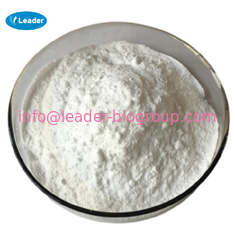
China Northwest Factory Manufacture 1,3-Dihydroxy(DHA) Cas 96-26-4 For Cosmetics Industry Use
-
ColorWhite
-
UseCosmetics
-
OriginChina
-
MOQ500KG
-
ManufacturerXI'AN LEADER BIOCHEMICAL ENGINEERING CO.,LTD
-
Place of OriginCHINA
-
Brand NameLeader
-
CertificationISO,GMP,SGS
-
Model NumberLD-02370
-
Minimum Order Quantity50KGS
-
PriceUSD30-50/KG
-
Packaging Details25KG/Drum
-
Delivery Time2-3 working days
-
Payment TermsWestern Union, MoneyGram
-
Supply Ability50MTS/Month
China Northwest Factory Manufacture 1,3-Dihydroxy(DHA) Cas 96-26-4 For Cosmetics Industry Use
![]()
| 1,3-Dihydroxy Basic information |
| Product Name: | 1,3-Dihydroxy |
| Synonyms: | PROPANE-1,3-DIOL-2-ONE;1,3-dihydroxy-2-propanon;1,3-Dihydroxydimethyl ketone;1,3-Dihydroxypropanone;Aliphatic ketone;Chromelin;Dihyxal;Ketochromin |
| CAS: | 96-26-4 |
| MF: | C3H6O3 |
| MW: | 90.08 |
| EINECS: | 202-494-5 |
| Product Categories: | Pharmaceutical intermediates;Imidazoles |
| Mol File: | 96-26-4.mol |
| 1,3-Dihydroxy Chemical Properties |
| Melting point | 75-80 °C |
| Boiling point | 107.25°C (rough estimate) |
| density | 1.1385 (rough estimate) |
| FEMA | 4033 | DIHYDROXY |
| refractive index | 1.4540 (estimate) |
| storage temp. | Refrigerator (+4°C) |
| pka | 12.45±0.10(Predicted) |
| form | powder |
| color | White |
| Water Solubility | >250 g/L (20 ºC) |
| JECFA Number | 1716 |
| Stability: | Stable. Combustible. Hygroscopic. |
| CAS DataBase Reference | 96-26-4(CAS DataBase Reference) |
| NIST Chemistry Reference | 2-Propanone, 1,3-dihydroxy-(96-26-4) |
| EPA Substance Registry System | 2-Propanone, 1,3-dihydroxy- (96-26-4) |
| Safety Information |
| Safety Statements | 24/25 |
| HS Code | 29141900 |
| Hazardous Substances Data | 96-26-4(Hazardous Substances Data) |
| Toxicity | CHROMELIN ? DIHYDROXY ? 1,3DIHYDROXY ? 1,3-DIHYDROXYPROPANONE ? DIHYXAL ? NSC-24343 ? OTAN ? OXATONE ? SOLEAL ? 2PROPANONE, 1,3-DIHYDROXY- ? TRIULOSE ? VITICOLOR |
| 1,3-Dihydroxy Usage And Synthesis |
| Chemical Properties | white powder |
| Chemical Properties | Dihydroxy has a characteristic sweet, cooling aroma. |
| Occurrence | A derivative of naturally occurring starch |
| Uses | 1,3-Dihydroxy can be used as artificial tanning agent. |
| Uses | 1,3-Dihydroxy (DHA) is a self-tanning agent used in cosmetics designed to provide a tanned appearance without the need for sun exposure. It is also a uV protector and a color additive. As a self-tanning agent, it reacts with amino acids found on the skin’s epidermal layer. Its effects last only a few days as the color it provides fades with the natural shedding of the stained cells. Reportedly, it works best on slightly acidic skin. DHA, when combined with lawsone, becomes an FDA Category I (approved) uV protectant. In 1973, the FDA declared that DHA is safe and suitable for use in cosmetics or drugs that are applied to color the skin, and has exempted it from color additive certification. |
| Definition | ChEBI: A ketotriose consisting of bearing hydroxy substituents at positions 1 and 3. The simplest member of the class of ketoses and the parent of the class of glycerones. |
| Preparation | Usually produced commercially from Bacillus macerans or Bacillus circulans fermentation of starch or starch hydrolysate |
| Taste threshold values | Reported to have a taste threshold value lower than that of sucrose with a detection level of 3.9 to 27 ppm and a recognition level of 11 to 52 ppm. |
| Safety Profile | Mutation data reported. When heated to decompositionit emits acrid smoke and irritating vapors. |



